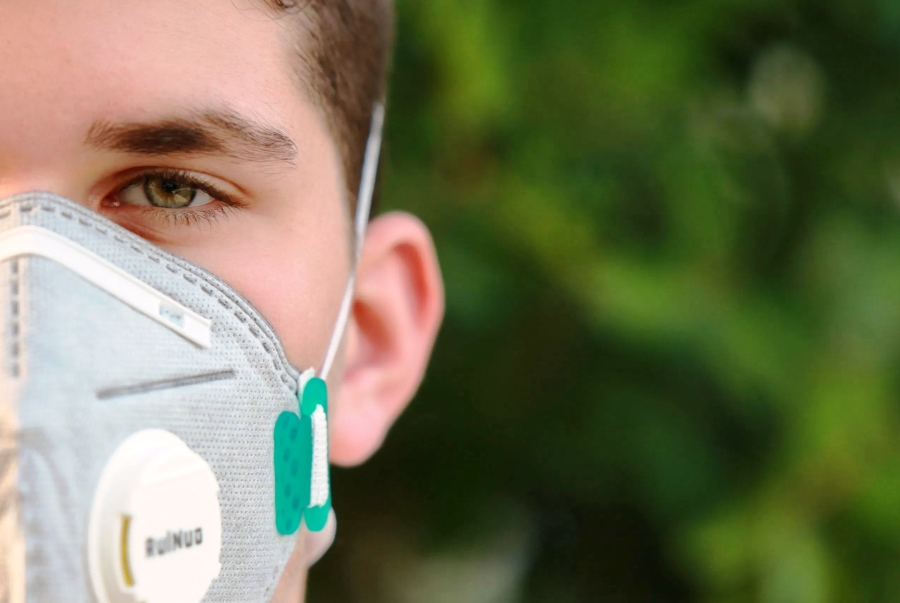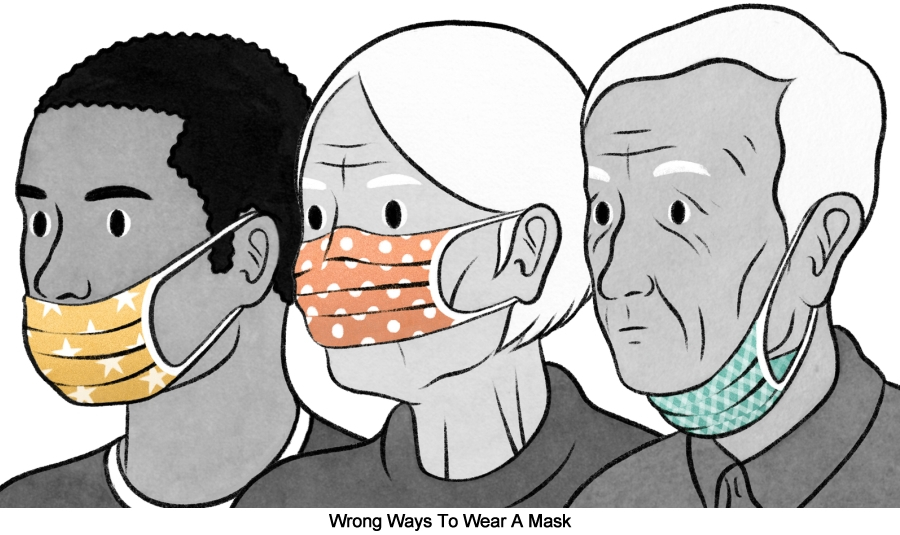
Computer Repair is Back in Louisa County, VA


So here we are in the middle of a pandemic with the latest numbers showing over 40,000 new cases of coronavirus identified each day. The latest predictions show this number could soon grow to over 100,000 new cases daily, if we don’t get this virus under control. But how do we do that?
One important way we can help prevent the spread of COVID-19 is by following the recommendations of the authorities on the virus. These respected scientists and virologists agree that by following simple procedures like frequent hand-washing, social distancing and mask-wearing can help stop the spread.
Washing our hands is a pretty simple and straight-forward idea to understand. Washing your hands isn’t new; it’s the way to keep bacteria and disease from spreading. Same with the social-distancing, if you keep your distance from people, it will be harder to become infected from them. It just makes sense.
The mask wearing is a little different. Masks weren’t recommended or required in the early stages of the pandemic. You might wonder why they are recommended now. Well, like anything else, the more we studied the COVID-19 virus, the more we learned about it and the more we learned about preventing the spread of the virus.
One of the most interesting aspects of the COVID-19 virus is that people can be infected and not show any symptoms for even two weeks. So, if you should happen to become infected, can you remember everywhere you went and everyone you came into contact with for the previous two weeks? I certainly couldn’t. And some people who are infected with the virus never show any symptoms at all. How can you prevent the spread of a virus you don’t even know you have?
That’s where the masks come into the picture. When we speak, sing or even simply breathe, we are expelling water (saliva) particles into the air. These expelled particles can carry the coronavirus if we are infected, whether we are symptomatic or not. Then, according to the New England Journal of Medicine, the virus can linger as airborne water droplets for up to three hours.
That’s right, you don’t actually have to come into contact with someone who’s infected; you can become infected from breathing in particles that are in the air from an infected person who was in the area hours ago. How would you know whether there are virus particles in the air or not? You can’t see them or sense them in any way. And social-distancing isn’t enough; these virus particles can travel up to 13 feet – that’s more than double the recommended social-distancing space.
So how can you protect yourself from these invisible virus particles? You protect yourself, and others, by wearing a mask. There are a number of different types of masks available and it can be confusing trying to figure out which one is right for you. In the next few paragraphs, I will describe each type of mask and exactly what protection it provides...and for whom.

The three main types of masks you will encounter are the surgical masks, the N95 masks and the cloth masks. Each of these masks provides a different level of protection. You might want to consider having several different types of masks, for different purposes and environments.
The first type of mask is called a surgical mask. The surgical masks are blue and white with a metal nose piece and ear loops. You wear these masks with the white side towards you and the blue side facing out. These are the masks you frequently see medical personnel wearing. These masks are designed to protect the wearer from fluids, droplets, splashes and filter out the larger particles in the air. Surgical masks protect the wearer from these larger particles, but mostly the masks protect others from your exhaled respiratory secretions. In a nutshell, you wear the surgical masks to protect others.
The next type of mask is the N95 mask. These masks are white, with white ear loops; there may or may not be printing on the outside of the mask. These masks also have a metal nose piece for the wearer to adjust. The N95 masks works to filter out both small and large particles when you inhale and exhale. As the name implies, these masks filter out 95% of small particles (0.3 micron size particles). You may also see KN95 masks and wonder if they are the same. For our purposes, you can consider them interchangeable. The N95 is the United States standard and the KN95 is the Chinese standard, but they both work equally well to filter the coronavirus.
Some N95 masks have a valve, others do not. Please note that if your mask has a valve, you are not protecting others, if you are infected. The valve will make it slightly easier for you to breathe, but this type of mask is only protecting you, not others. If you are sick, wearing this type of mask will allow you to spread the virus through your exhaled breath.
The third type of mask is the cloth mask. These masks may be purchased or a DIY project. Cloth masks are inexpensive and very easy to make. You can find instructions online to make your own mask; some instructions don’t even require knowing how to sew.

The best cloth masks are made from tightly woven cotton. You can find directions on the CDC website on how to make masks from t-shirts and bandanas. The most effective cloth masks contain several layers of fabric. Some cloth masks even have a pocket in which to place an additional filter for added protection. Wearing a single layer bandana will not provide protection.
Cloth masks work by filtering out larger particles when you exhale and inhale. The cloth masks are the most frequently recommended, as the N95 masks can be in short supply and should be available for medical personnel. You should wash your cloth mask after each use.
Whichever type of mask you choose, be sure to wear it properly. Always wear your mask over both your nose and your mouth. Adjust your mask to provide the most snug, secure fit that you can. Try to avoid touching your mask while wearing it; if the mask has filtered some virus from reaching you, it’s on the outside of your mask. Immediately wash and/or sanitize your hands, if you do accidentally touch your mask.
When you remove your mask, do so by the ear loops; do not touch the front of your mask. Always wash and/or sanitize your hands after handling your mask.
There are people for whom masks are not recommended, for example people who have trouble breathing or who are unconscious or who would not be able to remove the mask by him/herself. Masks are also not recommended for children under two years old. However, people who cannot wear masks can have their supplies delivered, so that they do not infect others. It’s possible to have almost everything delivered directly to your door.
Let’s all work together to knock out the COVID-19 virus by being smart. It’s pretty simple, wash your hands, practice social-distancing and wear a mask. If we all stick together and do what’s necessary, maybe by next year at this time, all this will be a distant memory.
Wear a mask...protect yourself...protect others.
Here is a link to our article containing valuable information on air purifiers. Along with a reccommendation. CLICK HERE